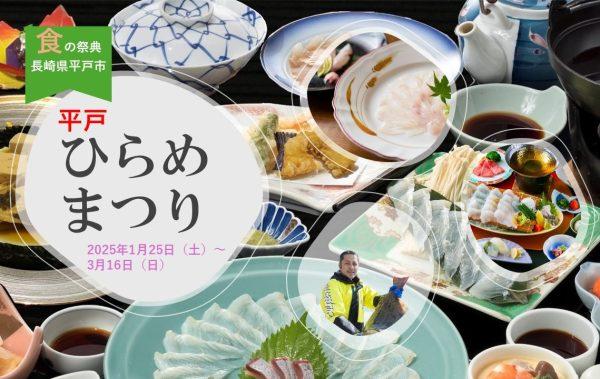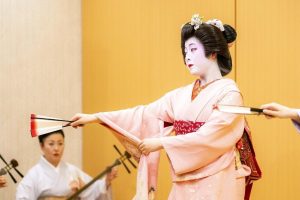Art, Sake and Gourmet Food! A trip to Tsunaki Town, Kumamoto Prefecture

Meet contemporary art Meet good sake and food
Tsunaki Town in Kumamoto Prefecture is located between Ashikita Town and Minamata City in the southern part of the prefecture. Surrounded by mountains on three sides, the town faces the Yatsushiro Sea (Shiranui Sea) to the west. It is said that the name "Tsunaki" came from the name of the town where Emperor Keiko "tied up" his ship when he made an expedition to Southern Kyushu in the old days. It is a small town with a population of about 4,000. However, it is a town of contemporary art known only to those in the know, and has an appealing local food scene.
Pledge to Rebuild from Minamata Disease: Building a Town through Art
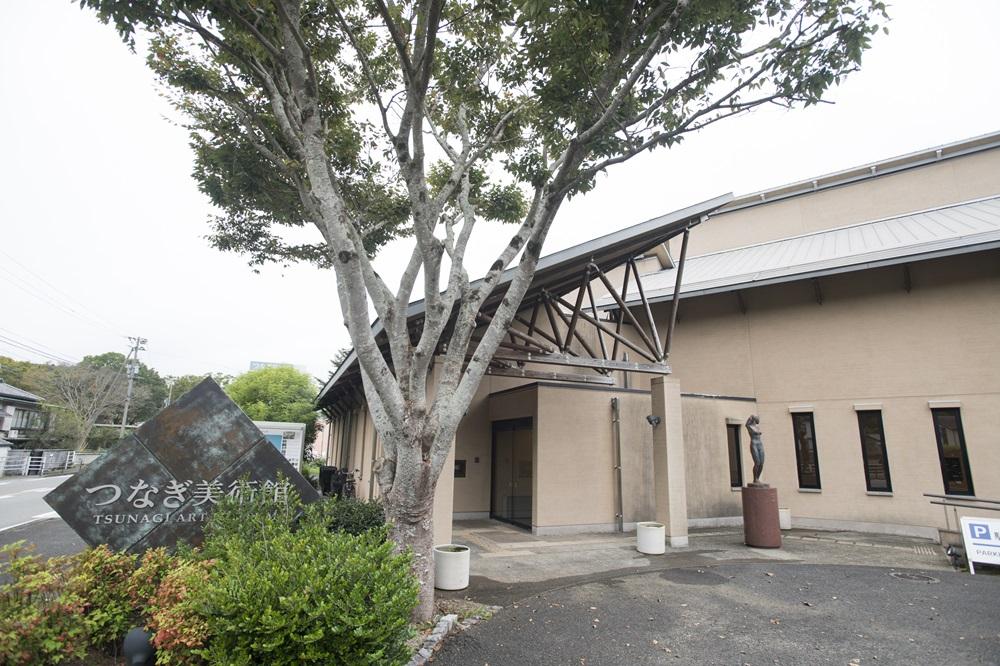
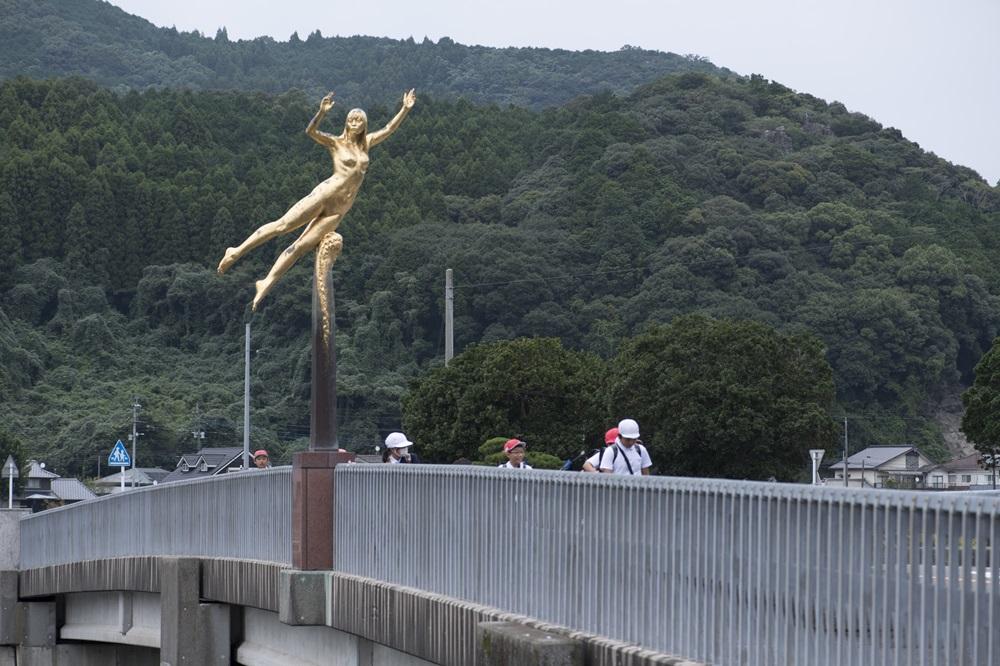
South of Tsunaki Town is the city of Minamata. As can be seen from this fact, Minamata disease once cast a serious shadow over this town as well. Methylmercury that flowed into Minamata Bay spread to the Yatsushiro Sea coast, causing Minamata disease patients in the town. The town was also exposed to harmful rumors. The town was damaged by Minamata disease and had to be rebuilt. In 1984, the mayor of the town and others began a project called "Creating a Town with Greenery and Sculptures" to address this issue. The mayor, who was both a doctor and an art enthusiast, aimed to "revitalize the community from Minamata disease through art.
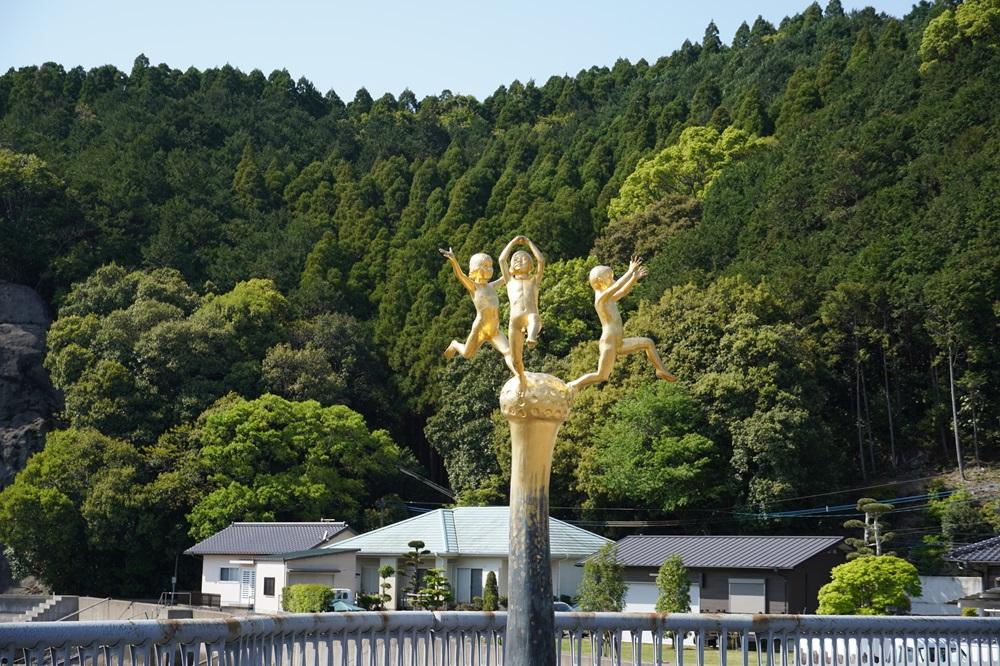
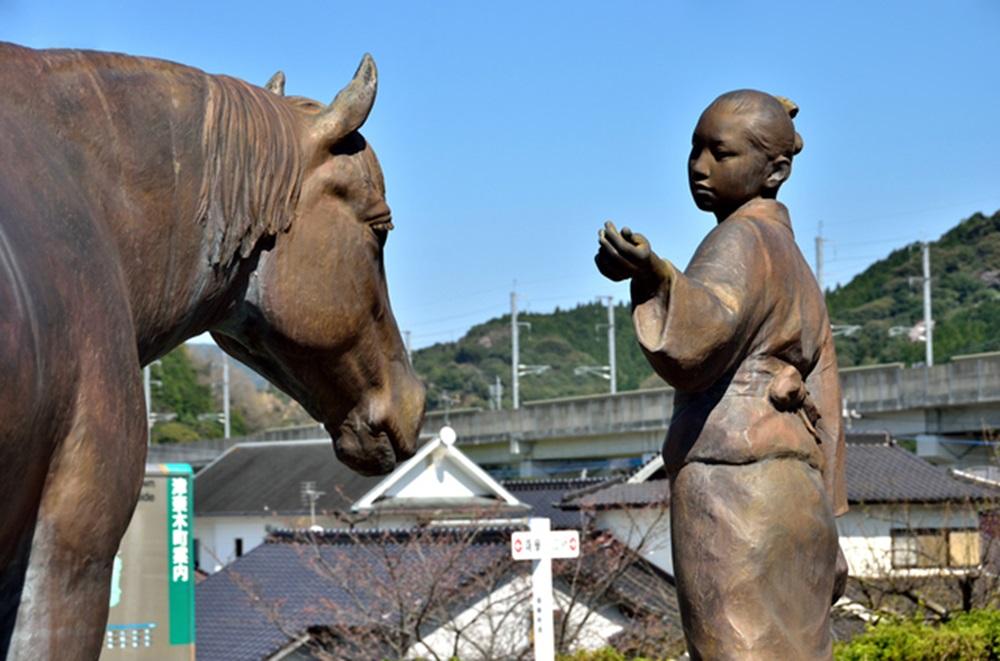
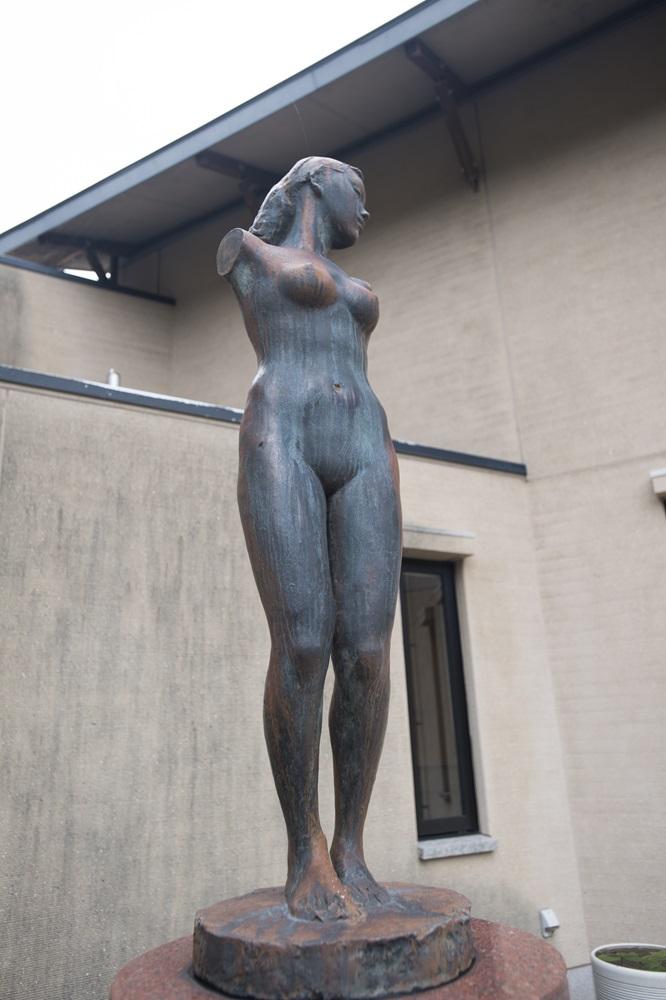
In the same year, "Young Woman", a statue of a nude woman, was installed at the entrance of the new town hall building. When the Akebono Bridge was built, "Soukaze" was installed on the bridge parapet, and new works were installed almost every other year in various locations in the town. Currently, 16 sculptures and objects by seven artists can be seen. Of these, eight works by Yuzo Iwano account for half, from the earlier "Young Woman" to his later work, "Pastoral Song. Three works by renowned sculptor Tadayoshi Sato (Churyo Sato), including "Torso" in front of the Tsunagi Museum of Art, which opened in 2001, can be seen in the museum.
These sculptures blend in with the townscape and are now a common sight for the residents of the town. But for those who come from elsewhere, it is a surprise to see so many works of art in such a small town. I am one of them. I am one of them. There are no outstanding tourist resources in this town. That is why it has a charm that only those in the know can appreciate.
Words and Spirits from Abolished Stones An abandoned school inn that speaks to the soul through meditation
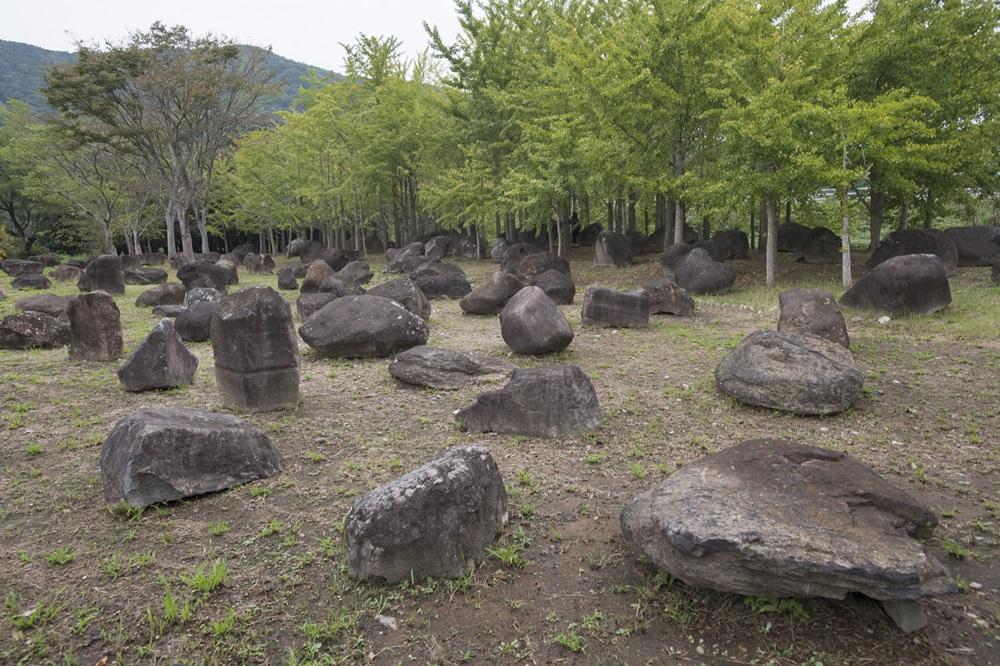
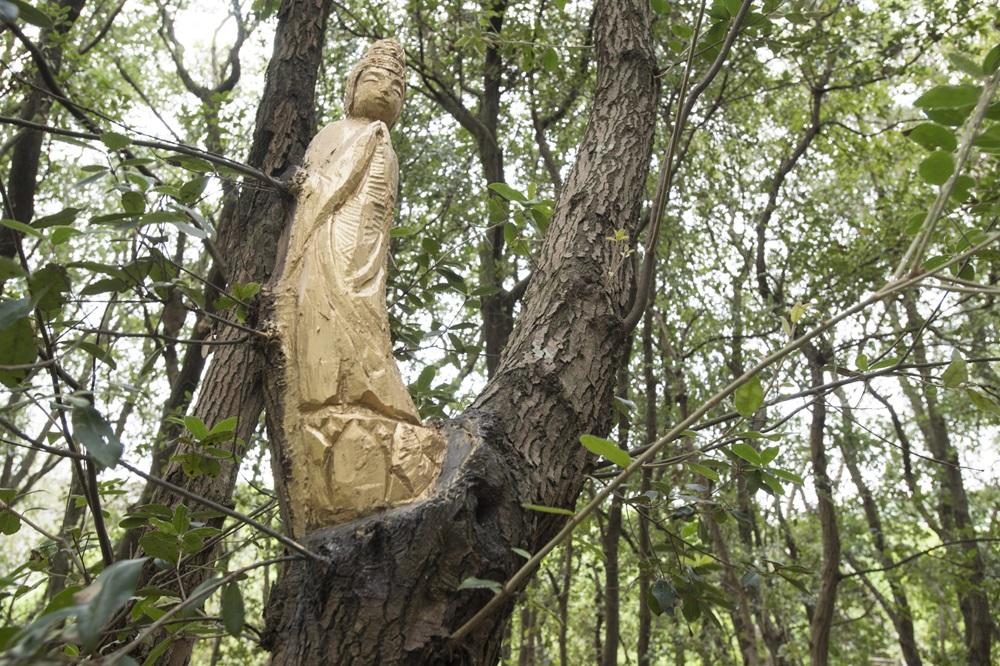
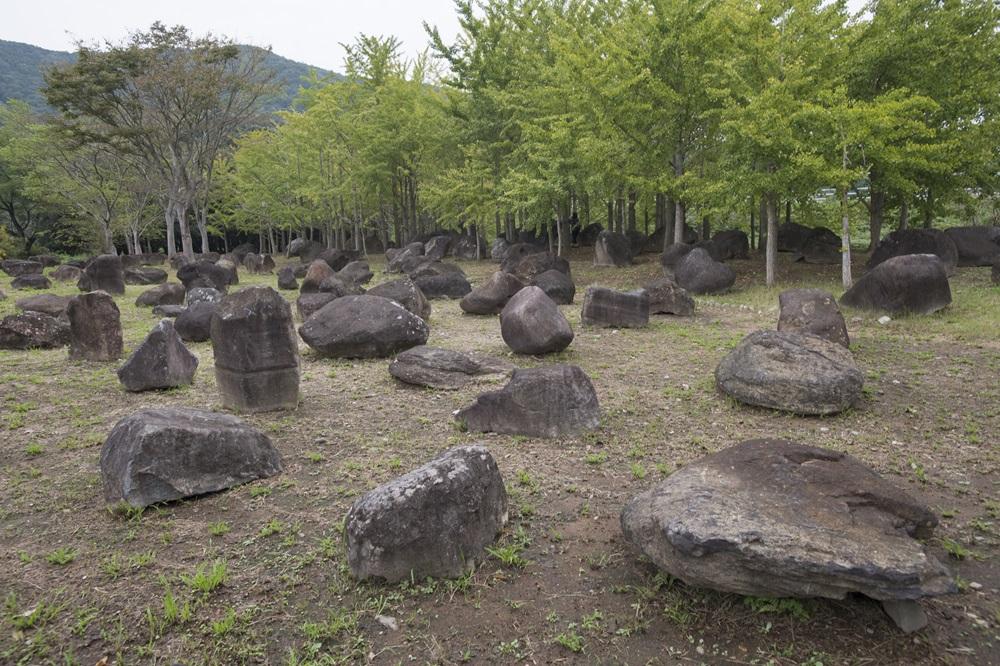
Town development through contemporary art continues to this day. For a three-year art project involving local residents starting in 2019, we invited world-renowned contemporary artist Yukinori Yanagi, who hails from Fukuoka Prefecture. The "Yukinori Yanagi Tsunagi Project" was planned for the 20th anniversary of the Tsunagi Art Museum. Although the town bears the tragedy of Minamata disease, it has no facility to exhibit the works of photographer Eugene Smith and writer Michiko Ishimure, who popularized Minamata disease. Shocked by this, Mr. Yanagi turned his attention to a ginkgo forest near the town hall.
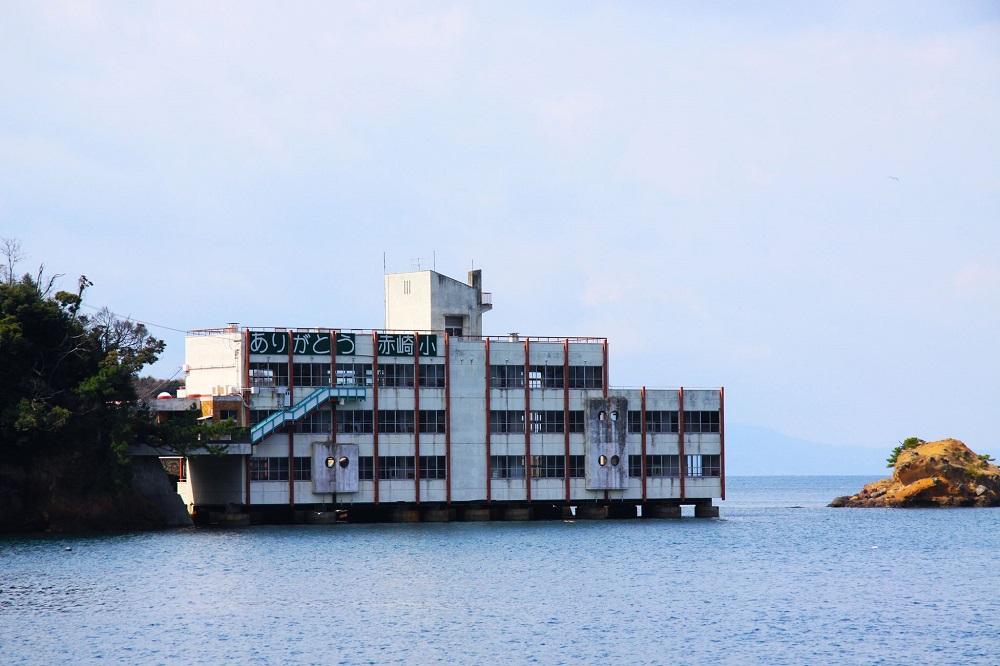
About 120 stones of various sizes were scattered in a clearing next to a ginkgo forest, and human voices were emitted from the cracks of the wedge marks. Walking among the stones, visitors can hear the testimonies of Minamata disease patients and the recitation of poems by Michiko Ishimure. This is the "Ishidama Forest. On the branches of a ginkgo tree, a golden Buddha image is carved. They are called "Tatsu-butsu. There are 33 in all. The Buddhas carved on the live trees will continue to show their prayers there as long as the ginkgo trees do not wither. (Watch the video below to see how the stone spirits look like!)

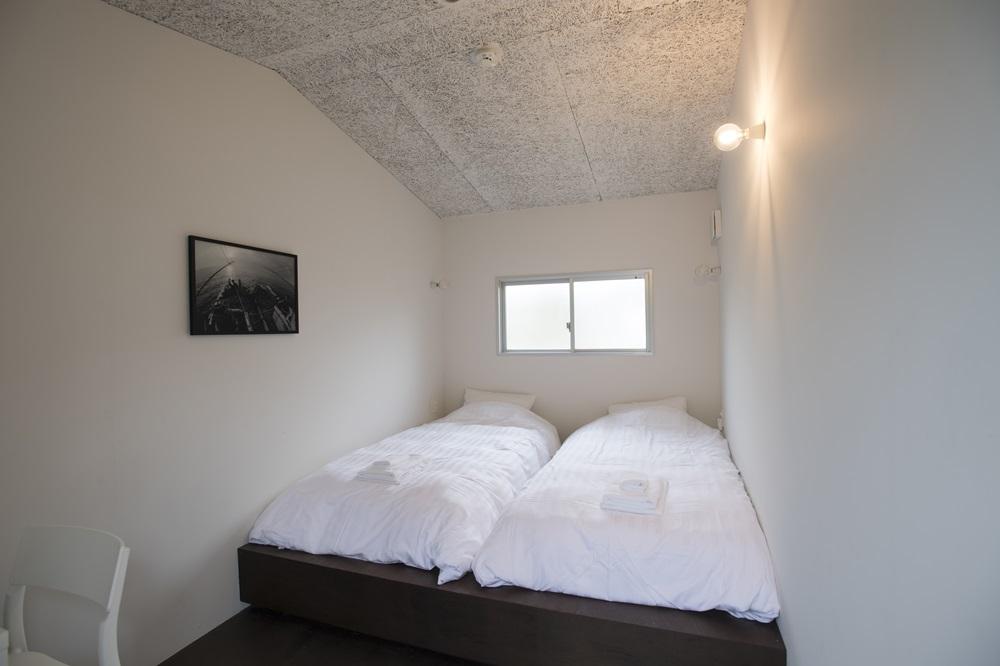
Furthermore, in the seaside Akasaki district, the area around the swimming pool of an abandoned school was turned into an uninhabited lodging facility called "Irimon no Yado. At the former Akasaki Elementary School, which closed in March 2010, the school building looks as if it were floating in the sea, and children used to enjoy fishing from the corridor windows. The nearby Bentenjima Island can be walked across at low tide.
The pool, where the children's cheers have disappeared, has been turned into a biotope, with a slope in the center of it that gives the sensation of gradually moving into the water. On the site of the former changing rooms, two small black-painted lodging rooms and a meditation room were constructed, and the lodging, limited to one couple per day, was named "Irumon-no-yado" ("inn of the spirit") after the title of a poem by Michiko Ishimure. That biotope slope is the Shiranui Sea, indicating that one can enter one's soul into the sea while witnessing the plants and organisms that live there.

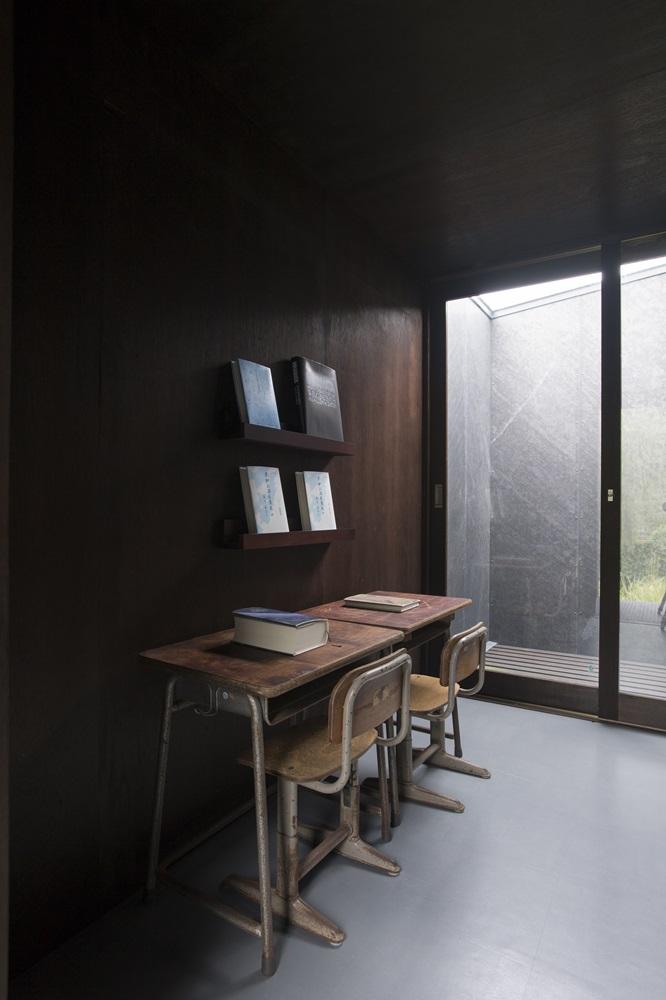
When you open the black door at the back of the inn's entrance, you will see a small window overlooking the sea. The reflection of the light on the glass window brings to mind a passage from "Irigon". The light of twilight is condensed, and the sky and the sea are joined by the breath of sublimated light. The windows of the meditation room, which are like mirrors, also reflect the same message: "When the shadows of dusk begin to drift in from such a breath of light, as if on cue, the sea begins to enter the soul. The small windows outside the guest rooms open onto black walls, through which Bentenjima and other islands can be viewed as if they were paintings.
A small desk and chair in the meditation room. The desk and chairs were used in a former elementary school and have a charming appearance. Here are a small number of books written by Michiko Ishimure and a collection of photographs by Eugene Smith. Away from the hustle and bustle, listen to the sound of the waves of the Shiranui Sea, and immerse yourself in the world of Michiko Ishimure's poetry. The large outdoor artwork that awakens the five senses is the "Irumon-no-Yado".
data of the inn where the souls are deposited
Location 167-2, Fukuhama, Tsunagi-cho, Asakita-gun, Kumamoto
Phone: 0966-61-2222 (Tsunagi Museum of Art)
Hours: 10:00-16:30 (last admission at 16:00)
Closed Wednesdays
Admission 1,000 yen (no preschool children, elementary and junior high school students must be accompanied by a parent or guardian)
Admission is by cash at the Tsunagari Museum reception desk or advance reservation through the website below. For lodging, please make a reservation at least 3 days in advance through the same website.
Irimon-no-Yado official website
Sake brewing starts with rice cultivation.
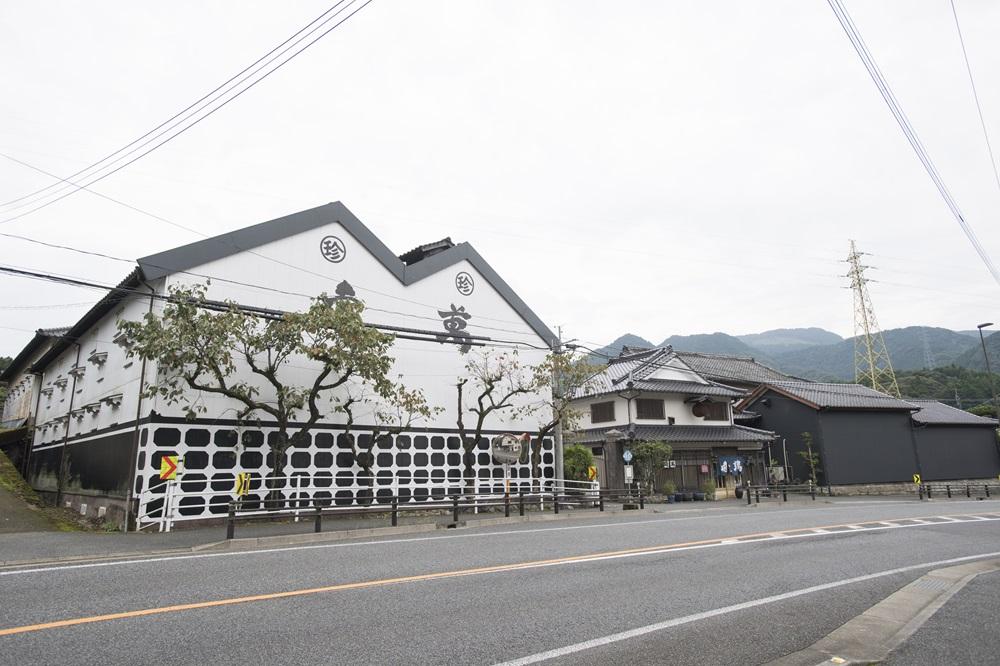
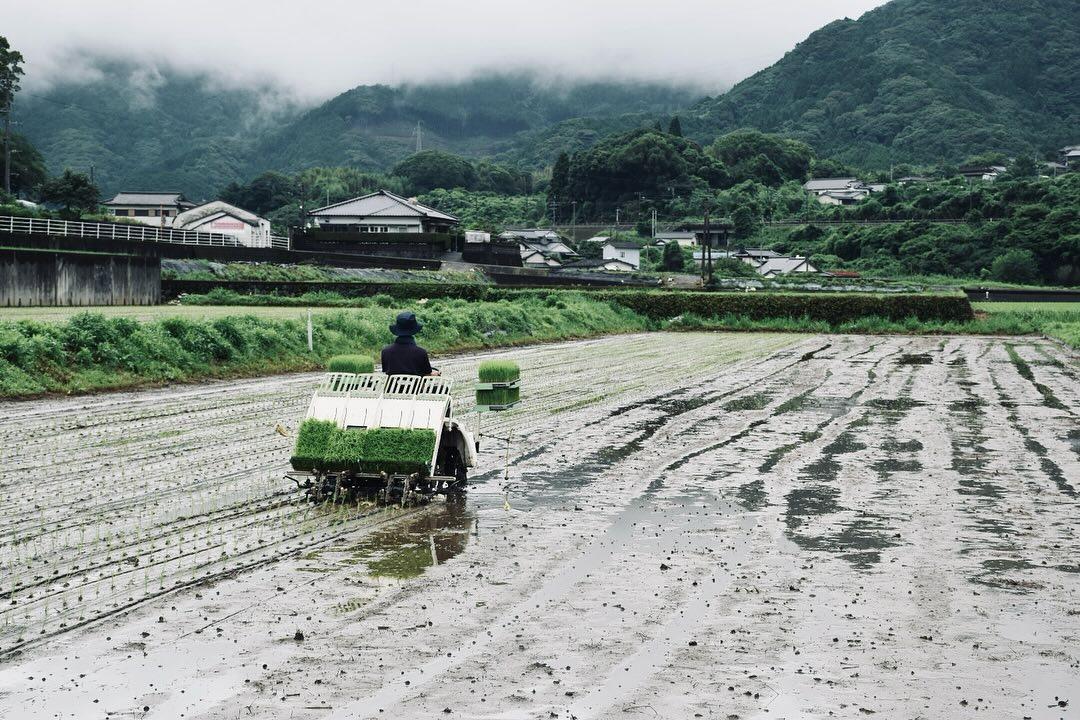
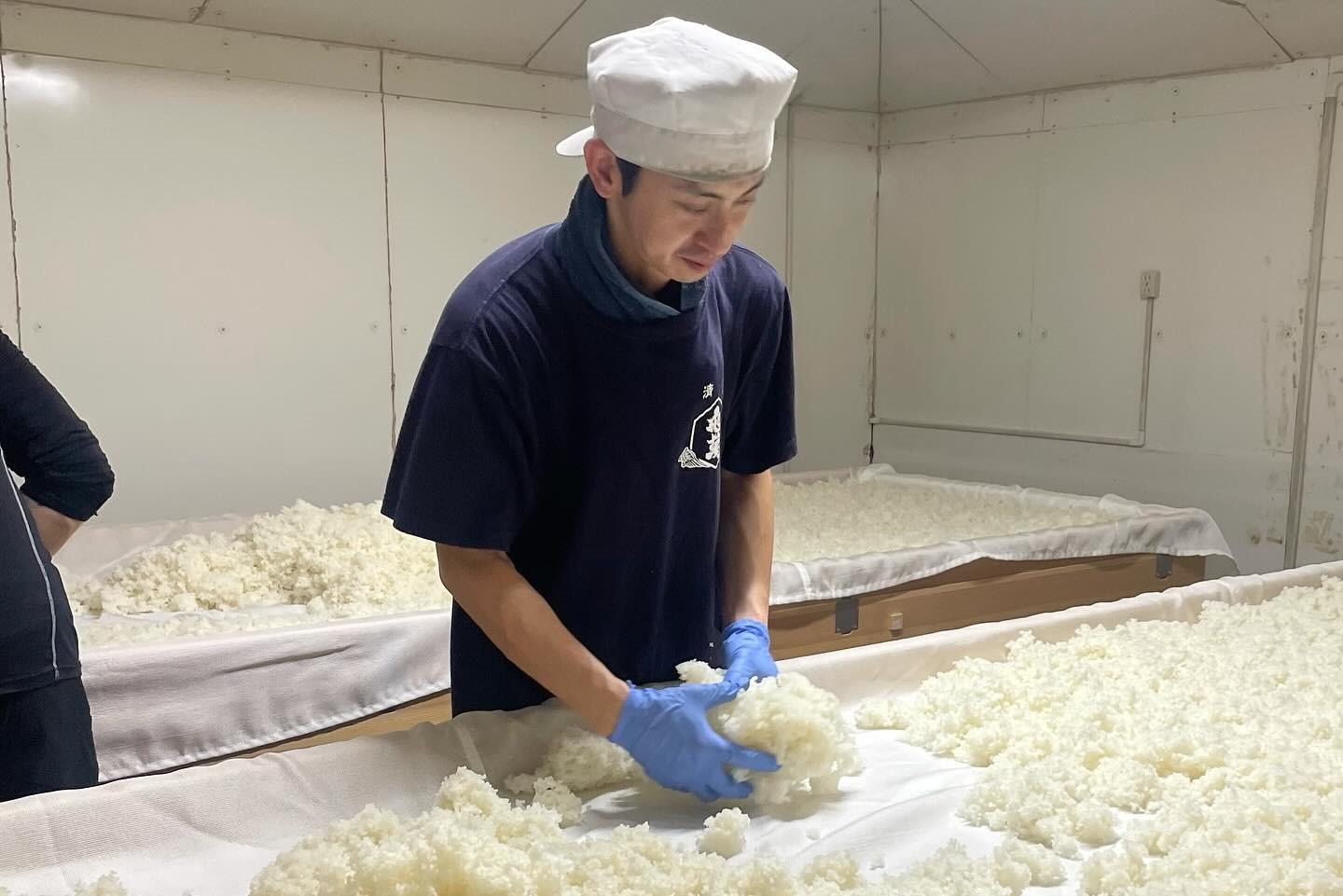
There is one sake brewery in Tsunaki Town. It is the Kameyama Sake Brewery, which stands facing National Route 3. It was founded in 1916 and has a history of over 100 years. Although it is located near Kagoshima Prefecture, which is in the shochu zone, it is a purely Japanese sake brewery and used to carry the sign "Japan's Southernmost Sake Brewery. Currently, the brewery is headed by the third generation, Shuichi Takeda, and the fourth generation, Ryusuke.
The Takeda family was a family of doctors, but the founder, Takeda Chinju, was the third son and had no intention of taking over the practice of medicine, so he came up with the idea of brewing sake using rice left behind by patients to pay for treatment. The fact that it was cold enough in those days to have knee-deep snow in winter, even in the southern part of the prefecture, was also an advantage for sake brewing. Rusuke says, "We made nigori sake and cooking sake, but our customers were the Chisso Corporation in Minamata. The Kagoshima region was another major customer.
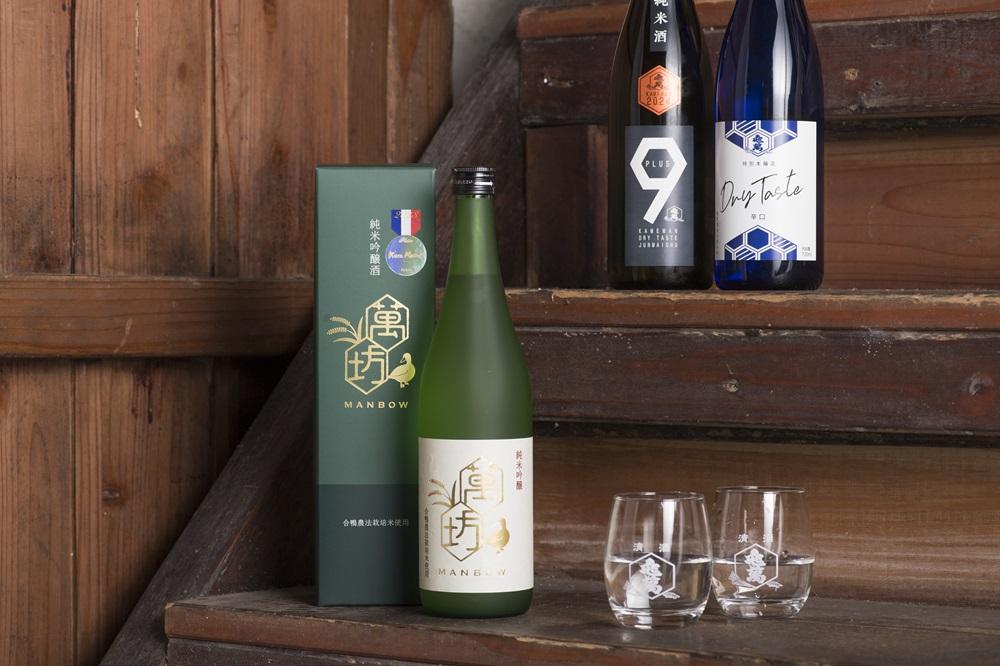
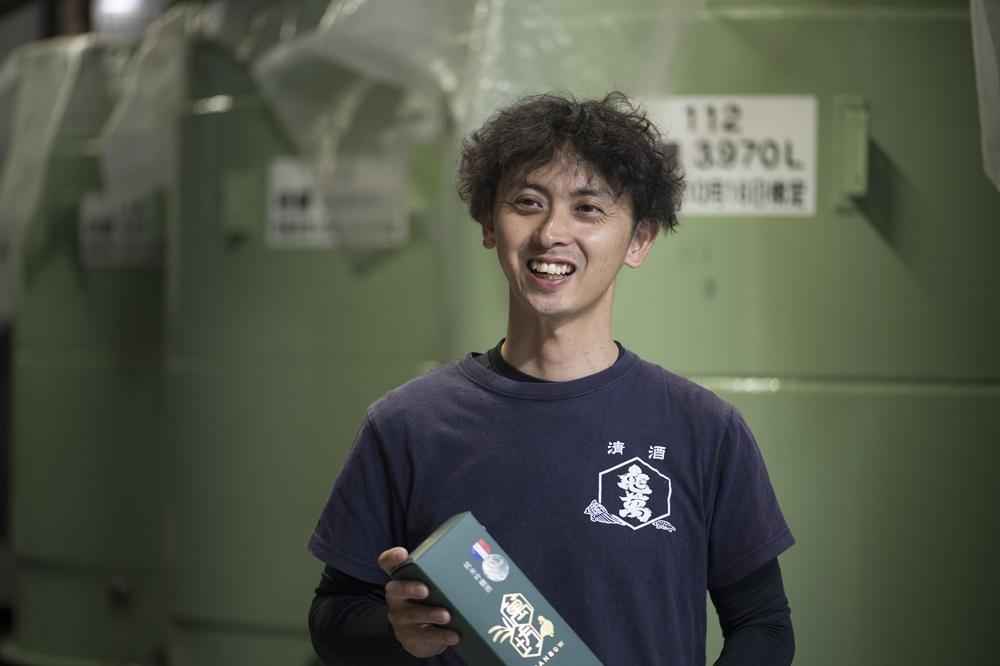
After graduating from Tokyo University of Agriculture, Runori trained at a sake brewery in Tochigi Prefecture. He joined his family's brewery 11 years ago. Since then, he has been working hard with his father, Shuichi, to make sake, but he also aims for "innovation," which is different from his father's. Perhaps because of this, he says, "My father and I have conflicting opinions. Perhaps that is why he says, "My father and I have conflicting opinions. Especially when it comes to sake rice production, we fight the most," he says with a wry smile. While Shuichi says that rice is something you buy, Rusuke insists on "producing good rice.
It has been eight years since he and his staff of farmers grew Yamada-Nishiki under the guidance of the prefectural government. The staff's enthusiasm rises when we make sake from rice. We can make unique sake," he says with a smile. The pride that the local rice, water, and soil bring to sake is the starting point of sake brewing can be felt.
Today's mild winter has affected sake brewing. Kameiman Sake Brewery makes ice from the water source and uses it for brewing in a unique "south end brewing" method. The process cools the heat of fermentation of the unrefined sake mash (moromi) and encourages a good fermentation process, resulting in a dry junmai sake with little bitterness. The aroma comes out when the sake is allowed to ferment slowly," says Mr. Kikuchi. The junmai ginjo "Manbo" (1,800㎖4,200 yen, 720㎖2,100 yen, 300㎖850 yen) won consecutive platinum awards at the KuraMaster sake competition in Paris in 2022 and 2023. The fourth generation of the family business of sake brewing is steadily connecting the brewery with the family business.
KAMEMAN Brewery Data
Location 1192 Tsunagi, Tsunagi-machi, Asakita-gun, Kumamoto
Phone: 0966-78-2001
Business hours 9:00-17:30
Closed No holidays
KAMEMAN SAKE Brewery Official Website
The last leg of the trip is still the search for delicious souvenirs.
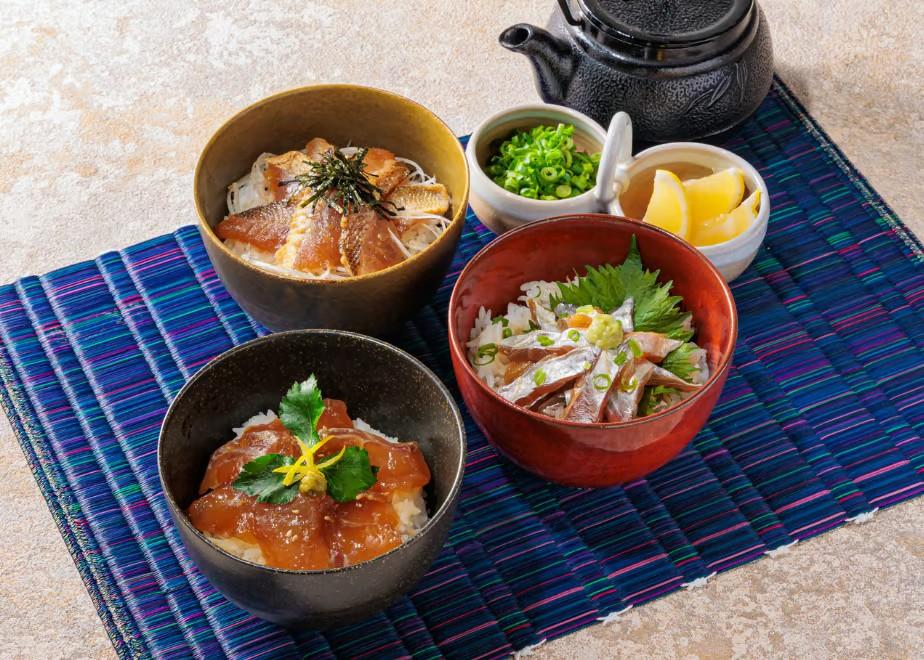
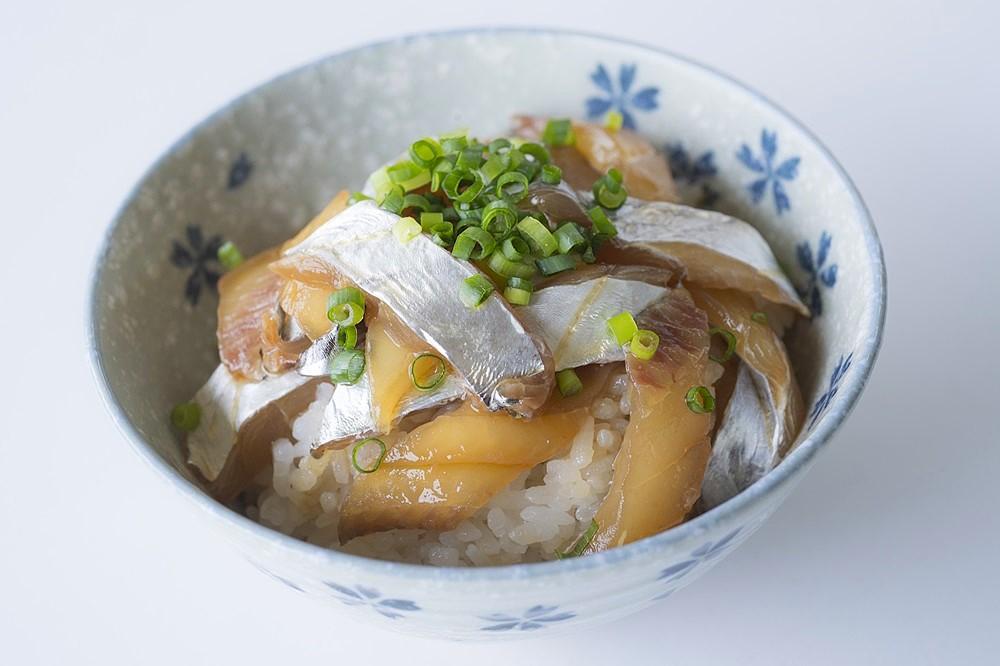
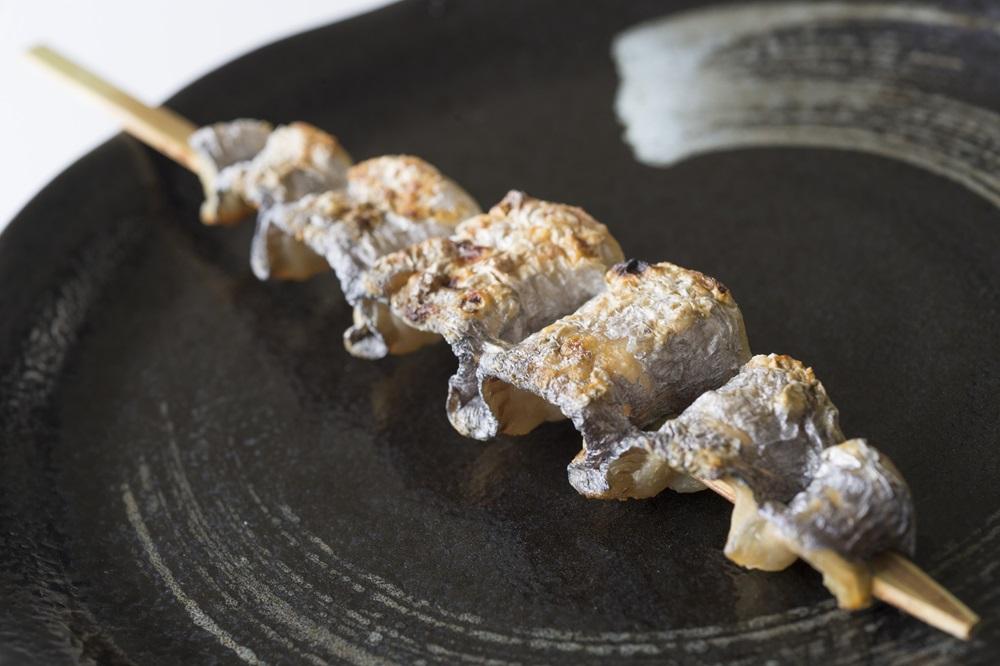
With the delicious sake as a souvenir, you also want a food souvenir. Hearing that a fisherman and his wife make a delicious fish chazuke (pickles), we head for the Hirakuni fishing port. We are greeted by Teruhisa Hamada and Ami Hamada of the Hirakunimaru. The couple started the processing plant with the help of a former sushi chef, because the fish trade was unstable. The first year of Corona, 2028, was the first year of the company's history. Chazuke is made by slicing sea bream, swordfish, barracuda, and other fish into sashimi, dipping them in a homemade sauce, and freezing them in an instant.
He immediately opened a bowl of chazuke, a dish of swordfish, and served it on a bed of rice. The sauce is made from the broth made from the fish," they explained, "plus rice malt sweet sake and soy sauce from Nagashima (Nagashima Town, Kagoshima Prefecture). If you eat it right away, the fish meat will be crispy, and if you eat it after a while, it will taste soaked in the marinade," they both explained. I see, I see, indeed. The six-piece mail-order chazuke set (4,100 yen) includes different types of fish depending on the season, but the swordfish and sea bream are available year-round.
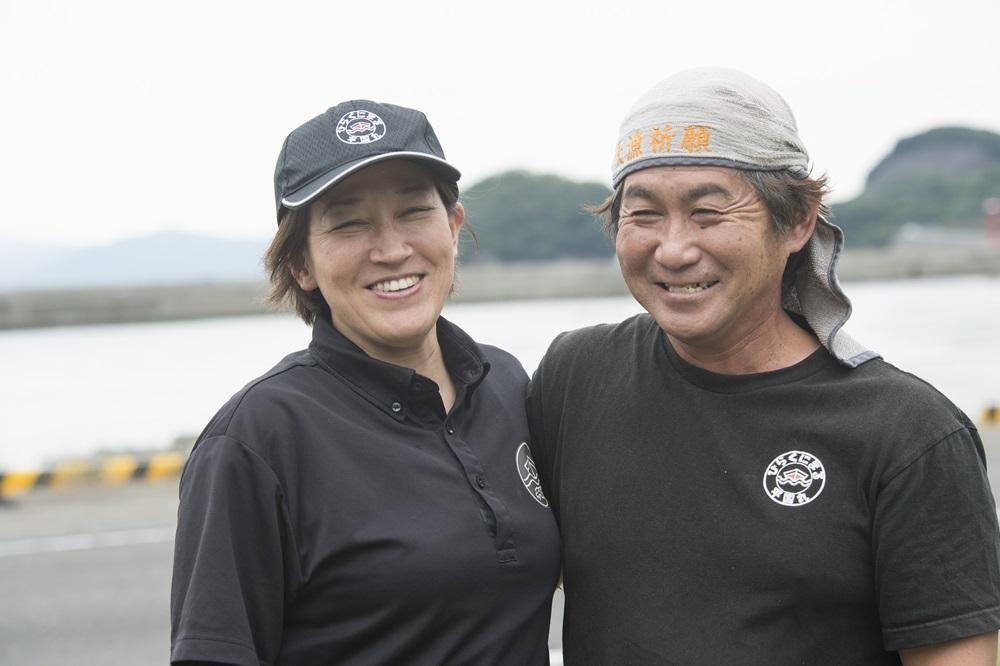
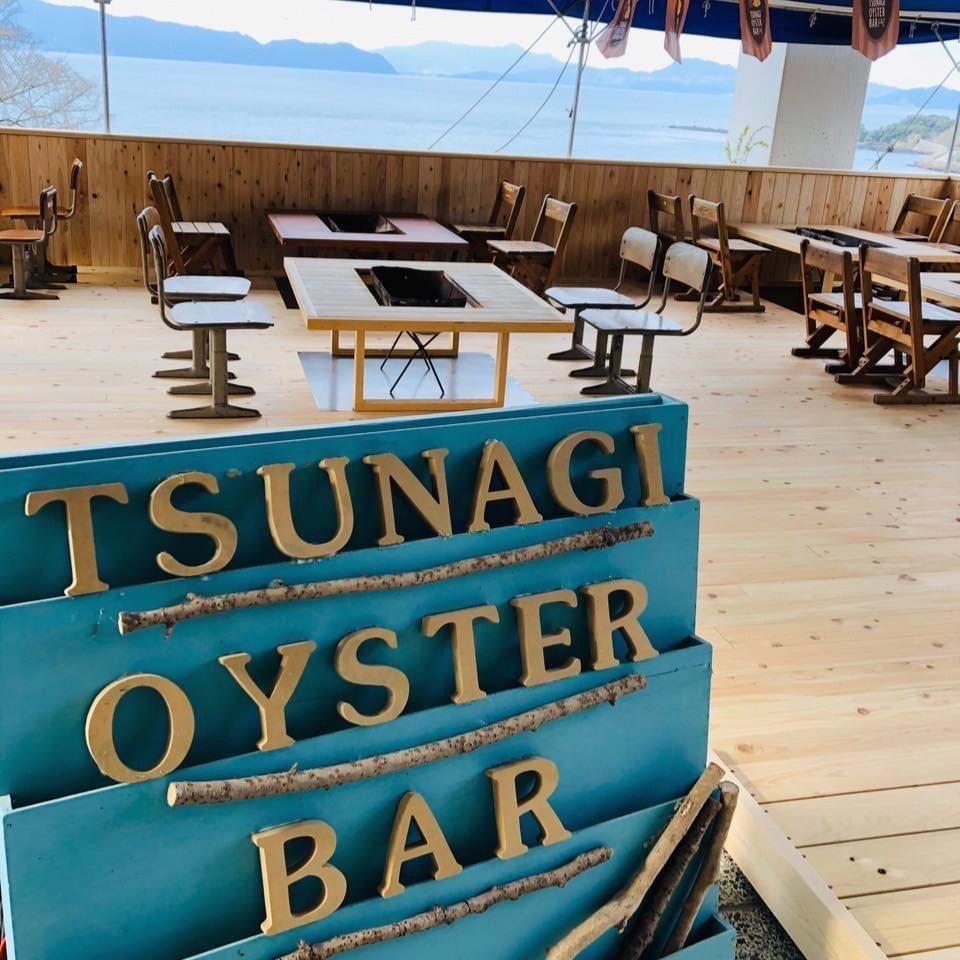
Teruhisa-san offered me a grilled swordfish skewer, saying, "You can try this, too. The swordfish was crispy and fragrant, and the meat was fluffy. It was delicious! The grilled swordfish skewers were featured on a TV program in Kumamoto and have become an explosive hit after being given the opportunity to sell them at a department store event. At the event, the fish is served on tempura skewers, but it is at its best when grilled. It seems to go very well with Kameman's sake.
By the way, this couple is very cheerful and lovey-dovey. Ami is from Fukuoka City, and Teruhisa was born and raised in the area. Teruhisa was born and raised in the area and worked as a carpenter in Fukuoka City. My family is a fisherman here," he says. I never thought a carpenter's wife would become a fisherman's wife," laughs Ami. The chazuke, the skewers, and the couple are all in great taste.
Heikoku Maru Online Shop
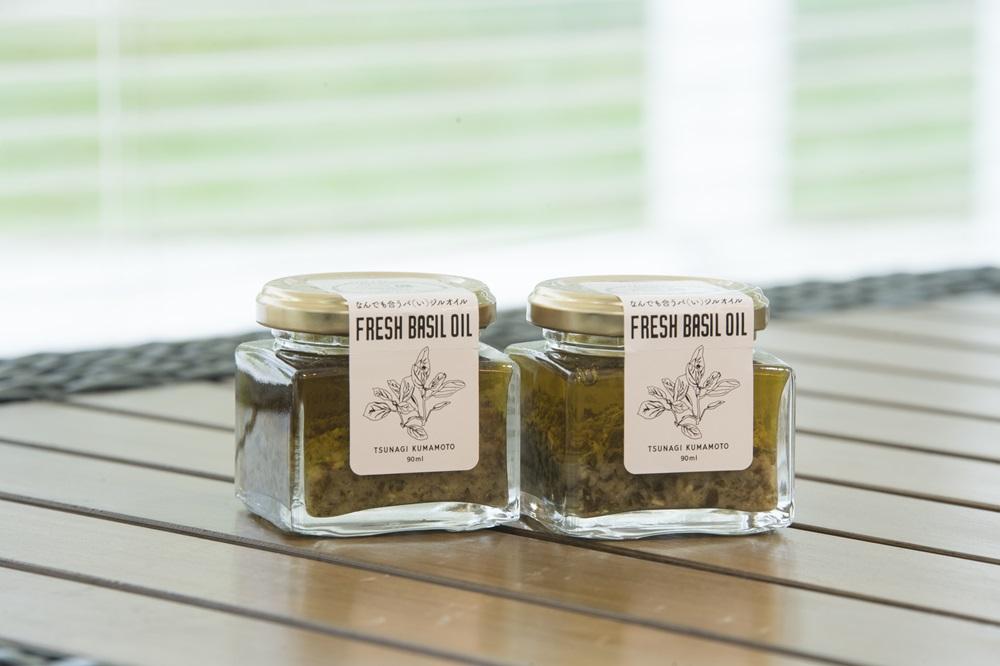
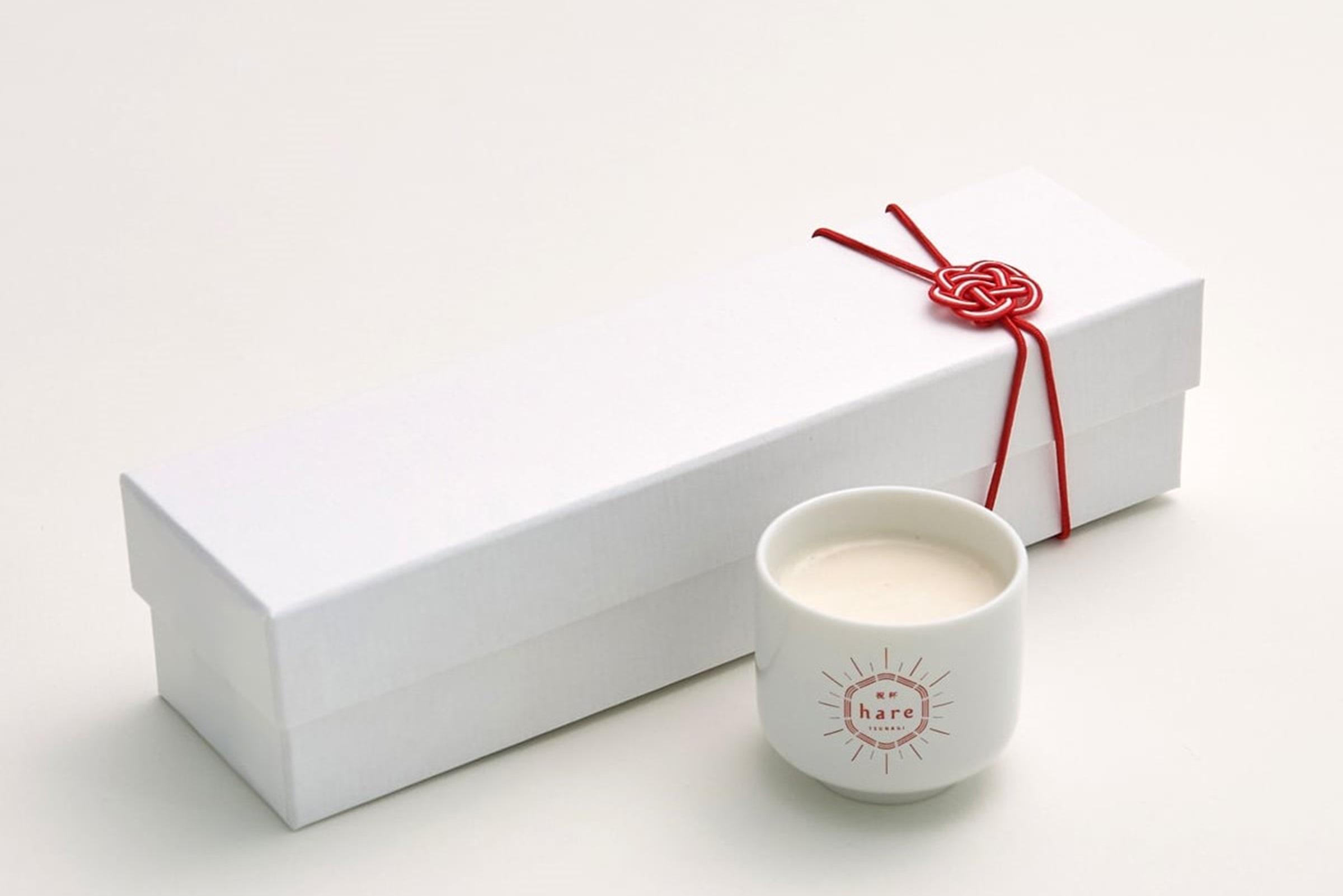
Speaking of seafood, don't miss oysters in winter. Oysters in Tsunaki Town are in season from January to April. During this season, Tsunagi Fisheries Cooperative's Tsunagi Oyster Bar opens in the ruins of an abandoned school on a hill near Hirakuni Fishing Port. The oysters grown in the Shiranui Sea are small in size, but they are said to be extremely creamy with concentrated flavor. The basil oil used at the bar has also gained a reputation. Made with basil from Minamata, farmed oysters from Tsunaki, brown sugar, and other ingredients, it can be used as a dipping sauce for baguettes and vegetables, or tossed with pasta. Sold at Tsunagi-Hyakkodo in Nakakoshinchi, except during the festival, it costs 1,080 yen per bottle.
And don't forget this one. It is the "Celebration Pudding Hare" (378 yen per piece) from the confectionery store An Sanku. Sakekasu (sake lees) pudding in a neatly designed small white booze cup. Yes, it is a dessert created in collaboration with the Kameyama Sake Brewery. Not only is the texture moist and smooth, but the flavor of sakekasu (sake lees) spreads slightly in the mouth. A grain of pudding with pesticide-free brown sugar is placed at the bottom of the pudding, which naturally melts into a sauce. Box of 2 pudding is 1,080 yen, box of 4 pudding is 2,000 yen.
Tsunaki is a small town indeed. However, if you look closely, you will find that the town is rich in content. The essence of travel is concentrated in the town, keeping visitors there.
Tsunagi Oyster Bar Data
Location 3503 Fukuhama, Tsunaki Town, Asakita-gun, Kumamoto
Phone: 0966-78-2015 (Tsunaki Fisheries Cooperative)
Open Saturdays, Sundays, and holidays from January to the end of April
Business hours: 11:00 - 16:00
(department) store that handles connections (e.g. telephone, fax, e-mail)
Location 1601 Iwaki, Tsunaki-machi, Asakita-gun, Kumamoto
Phone: 0966-78-2000
Business hours 9:00-18:00
Closed on the first Wednesday of the month
Tsunagi Hyakkodo official website
Zen monk, 1200-1253
Location 2113-88, Kotsunagi, Tsunagi-cho, Asakita-gun, Kumamoto
Phone: 0966-78-2472
Business hours 10:00-19:00
Closed Wednesdays
An-San-Ku official website

